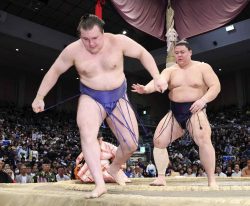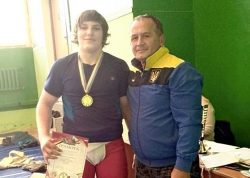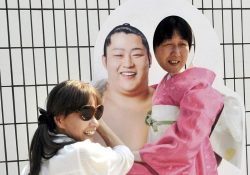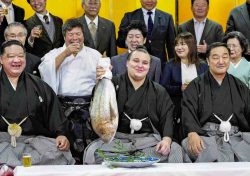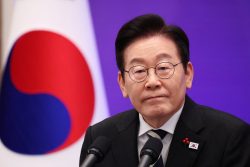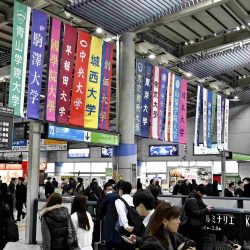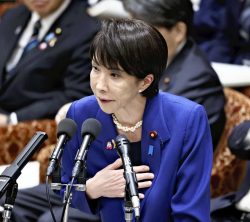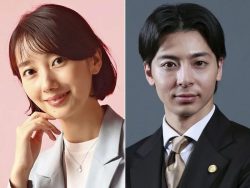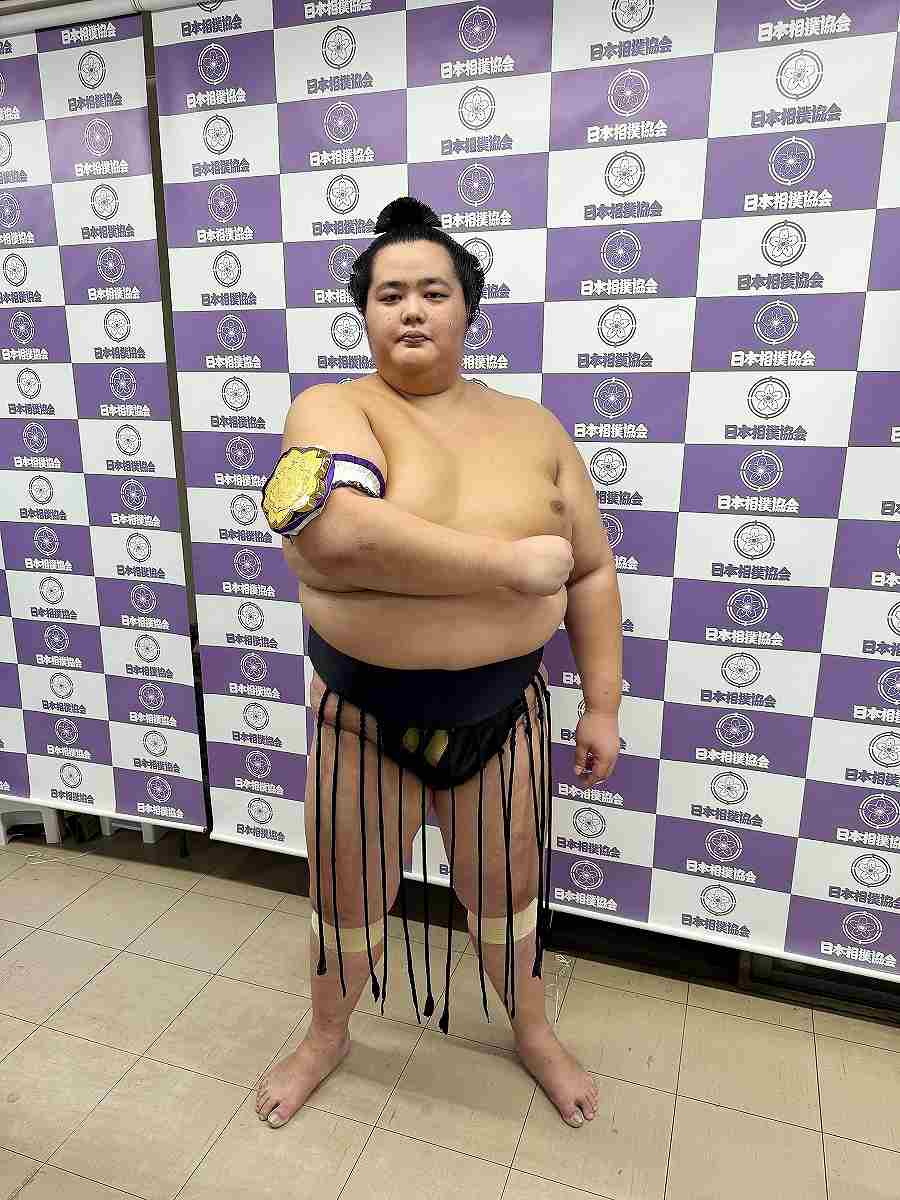
Ozeki Kotozakura shows off the armlet he received for winning the All-Japan Sumo Wrestlers Competition on Sept. 30 at Tokyo’s Ryogoku Kokugikan.
12:48 JST, October 16, 2024
The sport of sumo, which holds such an eminent place in traditional Japanese culture, also has a strong connection to Shintoism.
On the day before the start of a grand tournament, the head referee, dressed in the robes of a Shinto priest, conducts a Shinto ritual. The yokozuna performs his entrance ceremony wearing a thick, braided rope around his waist that resembles the sacred “shimenawa” rope displayed during the New Year holidays and on other occasions.
Against such a historic background, ritual matches known as “hono sumo” are held nationwide in cooperation with major shrines.
Tokyo’s Meiji Jingu shrine has a particularly deep relationship with the Japan Sumo Association. When a wrestler achieves promotion to the elite rank of yokozuna, it is Meiji Jingu where a special ceremony is held to mark the occasion. Later, the new yokozuna famously performs his first ring-entering ceremony in the plaza in front of the shrine’s main hall.
Every year after the Autumn Grand Tournament, an event called the “All-Japan Sumo Wrestlers Competition” is held at Tokyo’s Ryogoku Kokugikan in celebration of the Meiji Jingu Autumn Grand Festival. The event has a long history, earning the title of sumo’s oldest tournament in Japan.
The event was launched in 1925 during the Taisho era (1912-1926). It has been canceled a number of times due to war or other reasons, so this year’s tournament on Sept. 30 was the 81st. Although translated as “competition,” the title in Japanese uses the character for “samurai” (which is also the “shi” in “rikishi,” or sumo wrestler) to imply that the participants are more than just ordinary athletes, giving it a deeper meaning.
At the inaugural tournament, the 27th yokozuna Tochigiyama, who had just retired, made a special appearance. It is said that he defeated the active yokozuna to win the title, adding an anecdote to sumo history that would seem unthinkable today.
Looking at a list of past champions, we see some of the biggest names in the sport’s history, from Futabayama to Taiho, from Kitanoumi to Chiyonofuji. Adding his name to such prestigious company was the champion of this year’s tournament, ozeki Kotozakura. With the absence of injured yokozuna Terunofuji, Kotozakura was the highest-ranked wrestler in the field, and lived up to the billing by defeating newly promoted ozeki Onosato in the final.
Ironically, Kotozakura’s grandfather — a yokozuna who was the original Kotozakura — never won the tournament. As the current Kotozakura sported the armlet with a chrysanthemum crest awarded to the champion on his right bicep, he gleefully commented, “I’m happy I could add the name of Kotozakura [to the champions’ list].”
The win came in the wake of a mediocre 8-7 record at the Autumn tourney. “I hope this will lead to success at the next grand tournament,” he said.
I hope Kotozakura gained a sense of the sacredness created by the long history of the event, and comes back strong at the Kyushu Grand Tournament.
— Kamimura is a sumo expert.
"Sports" POPULAR ARTICLE
-

Speed Skater Yukino Yoshida Clinches Ticket to Milan
-

Yoshinobu Yamamoto Cheered by Los Angeles Lakers Fans at NBA Game
-

Kenta Maeda Joins Rakuten Eagles; Returns from American MLB to Japanese Pro Baseball for First Time Since 2015
-

Ukrainian Sumo Wrestler Sekiwake Aonishiki to be Promoted to Ozeki
-

Maruyama’s Ski Jump Streak Snapped
JN ACCESS RANKING
-

Tokyo Economic Security Forum to Hold Inaugural Meeting Amid Tense Global Environment
-

Keidanren Chairman Yoshinobu Tsutsui Visits Kashiwazaki-Kariwa Nuclear Power Plant; Inspects New Emergency Safety System
-

Imports of Rare Earths from China Facing Delays, May Be Caused by Deterioration of Japan-China Relations
-

University of Tokyo Professor Discusses Japanese Economic Security in Interview Ahead of Forum
-

Japan Pulls out of Vietnam Nuclear Project, Complicating Hanoi’s Power Plans


